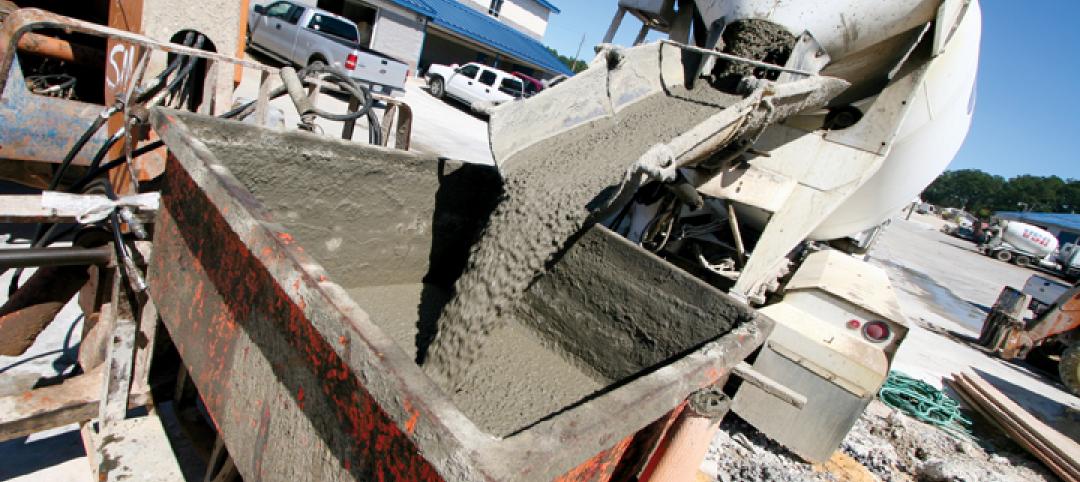On September 29, the MILL National Training Center opened in Colorado Springs, Colo. The 46,000-sf facility, in a former potato chip factory, is being touted as the first of its kind in the nation to offer high school students, military veterans, teachers, and anyone looking to start a new career training in woodworking manufacturing, cabinetry, and construction.
The MILL—which stands for Manufacturing Industry Learning Labs—opened with an estimated $3 million in equipment, more than $500,000 of which was donated by Stiles Manufacturing, a Grand Rapids, Mich.-based company that makes computer numerically controlled devices.
All told, the MILL is working with 40 business partners, including paint manufacturer and retailer Sherwin Williams, which is opening its second design center in the country (https://www.youtube.com/watch?v=mL3g6Zp2J0Y&t=61s) at the Training Center, and has donated $300,000 to its operations. Locally based RTA Architects provided architectural services to The MILL in exchange for access to its high-tech machines to develop prototypes. The Wood Machinery Manufacturers of America and the Woodworking Machinery Industry Association donated $25,000.
The facility, near Shriver Air Force Base, is on a Vocational and Educational Campus sponsored by two school districts: Peyton School District 23-JT and Widefield School District 3. The genesis of the MILL can be traced to woodworking manufacturing classes that Peyton, a school with 600 students, started offering its students in the fall of 2016, in an old school east of Colorado Springs.
The MILL's Founder and President is Dean Mattson, a former cabinetmaker whom Peyton hired in 2015 to help get its school’s woodworking classes off the ground. Mattson had launched a similar program for Oregon’s North Salem High School that, in six years, turned out 3,000 skilled workers. Mattson was unavailable for comment about the Mill.
Enrollment for those classes at Peyton quickly grew, from 40 the first semester to 100 last fall. Thirty-five of those students are from the Widefield district, which became aware of this program via an open house that Peyton’s superintendent Tim Kistler hosted to show it off.
While 50 students continue to be enrolled in Peyton’s woodworking courses, 85 of the district’s students now attend the MILL’s woodworking classes, and 50 its construction classes, according to Kistler. (Each of these sessions is 90 minutes long, four days per week. Kistler says the school will go to five days a week next year.) A total of six school districts are bussing kids to either the MILL or to Peyton.
Widefield, a school district with 9,300 students, paid $1.1 million to buy the building that the Mill operates from. Peyton will pay Widefield back until each district is a 50% owner.
The 46,000-sf MILL training center is equipped with more than $3 million worth of machinery. Image: Courtesy of RTA Architects and The MILL
The rationale behind The MILL National Training Center is the ongoing shortage of skilled construction labor. In their third-quarter 2017 report, USG Corporation and the U.S. Chamber of Commerce found that 91% of contractors polled are at least moderately concerned about the skill levels of their workforces. And 60% said they are still having trouble finding skilled workers, particularly electrical, HVAC, roofing, sheet metal, and mechanical installers.
The construction industry’s 4.5% unemployment rate is the lowest it’s been in a decade. The trade group Associated General Contractors reported that in October, construction employment increased in only half of the states compared to the same month a year ago, “a total that would probably have been higher if workers were available,” said AGC’s economist Ken Simonson.
The MILL’s courses, which are each one semester (53 to 63 instructional hours), offer a career-training path that enables graduates to be nationally certified in the use of woodworking machines, manufacturing equipment, software, and production skills. Students work toward earning a Woodwork Career Alliance (WCA) Certification Passport, which equates to a national certification credential to operate woodworking machinery and apply lean manufacturing principles in any kind of secondary wood or other manufacturing setting.
The MILL currently has two instructions for its woodworking courses, and two for its construction courses.
Public school students attend for free, with their school districts picking up the costs. Next year, the courses will be opened, on a fee basis, to military veterans and other people looking to get into the construction field.
On February 7-9, the MILL Academy will offer a three-day seminar for teachers and administrators who want to learn how to build support for an industrial arts program in their schools, including public-private partnerships. Participation in that session costs between $2,295 and $2,995 per person, with discounts for multiple enrollments from the same organization.
The MILL has the capacity to handle up to 1,000 students per semester, and Kistler thinks it can hit or exceed that number.
A condition of Stiles Manufacturing’s equipment donation was that the MILL be located within 15 minutes of Colorado Springs’ airport, and near restaurants and hotels, to abet the MILL's national recruitment efforts. An estimated 77,000 companies offer jobs that require Stiles tools. In February, Stiles is sending a contingent of employees and product users for training. Other manufacturers have indicated that they’d like to use the facility for the same purpose.
Kistler foresees the MILL National Training Center eventually becoming a vocational high school by day, and a place for continuing education by afternoon and night.
Related Stories
| Jan 19, 2012
Odebrecht and Braskem bring sustainable award to U.S. university students
The Odebrecht Award for sustainable development rewards future leaders in engineering and chemistry.
| Jan 16, 2012
2012 40 Under 40 applications due Friday, Jan. 20
Building Design+Construction's 40 Under 40 is open to AEC professionals from around the world who are under 40 years old, as of January 1, 2012.
| Jan 4, 2012
New LEED Silver complex provides space for education and research
The academic-style facility supports education/training and research functions, and contains classrooms, auditoriums, laboratories, administrative offices and library facilities, as well as spaces for operating highly sophisticated training equipment.
| Jan 3, 2012
New SJI Rule on Steel Joists
A new rule from the Steel Joist Institute clarifies when local reinforcement of joists is required for chord loads away from panel points. SJI members offer guidance about how and when to specify loads.
| Jan 3, 2012
AIA Course: New Developments in Concrete Construction
Earn 1.0 AIA/CES learning units by studying this article and successfully completing the online exam.
| Dec 12, 2011
AIA Chicago announces Skidmore, Owings & Merrill as 2011 Firm of the Year
SOM has been a leader in the research and development of specialized technologies, new processes and innovative ideas, many of which have had a palpable and lasting impact on the design profession and the physical environment.
| Dec 12, 2011
CRSI design awards deadline extended to December 31
The final deadline is extended until December 31st, with judging shortly thereafter at the World of Concrete.
| Dec 10, 2011
Energy performance starts at the building envelope
Rainscreen system installed at the west building expansion of the University of Arizona’s Meinel Optical Sciences Center in Tucson, with its folded glass wall and copper-paneled, breathable cladding over precast concrete.
| Dec 7, 2011
ACE Mentor Program receives Presidential Award for Excellence in Science, Math and Engineering Mentoring
Thornton Tomasetti founding principal Charles H. Thornton responsible for launching ACE.















